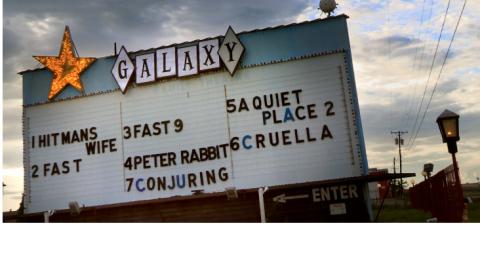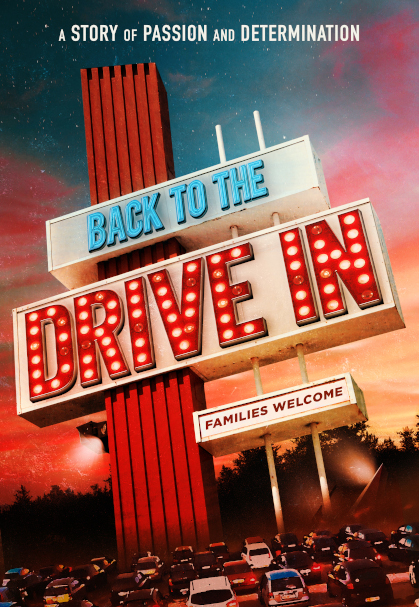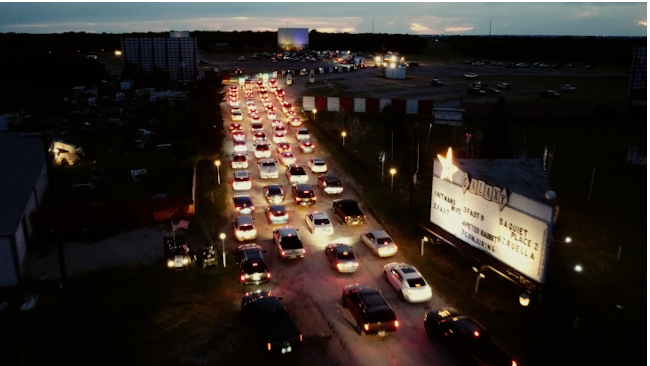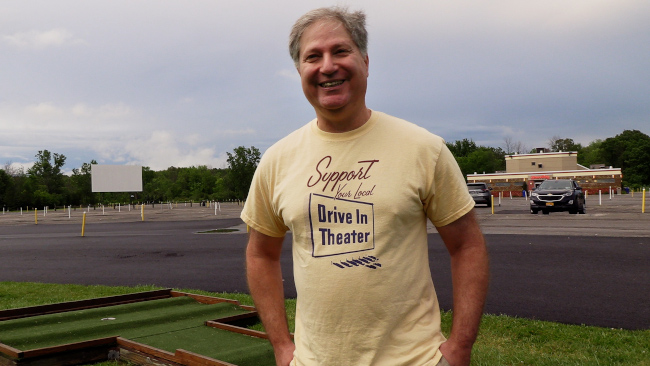Retro Americana: The Return of Drive-Ins

Drive-in movies—remember those? Piling in the car, waiting for the sun to go down, the smell of popcorn from the snack bar, cranking up the speakers at last to watch that giant white screen fill up with actors, action, and dreams.
Writer and director April Wright’s bighearted documentary, Back to the Drive-In, advertises itself as a story of passion and determination. With 11 venues in eight states, there’s enough grit and resolve in her smalltown superheroes and heroines to inspire even the most jaded big-city viewers. Many of the vignettes have a home-movie feel—a “down home” sensibility that’s part of the charm.

But what exactly keeps these intrepid drive-in entrepreneurs going? Nostalgia, plain and simple. It's the one thing that all of her subjects are drunk on.
Take neophytes Jeff and Jennifer Karl from Valley, Nebraska, opening right before March 2020, the height of the dreaded pandemic. On the plus side, some customers found isolating in their cars to be a possible solution to enduring the virus. From the start, Jeff’s friends thought his new plan was a crazy idea. Eleven acres that needed mowing each week, $30,000 for a laser projector, and Jennifer’s conviction that “if you have a dream, you can build it” made Quasar a reality.

The facts? In 2020, 549 drive-in theaters were active, down from 848 in 1995, with a steady decline of 35 percent over 25 years.
If re-runs of The Big Lebowski aren’t enough to keep the younger set coming back, there’s a pre-show local band at Field of Dreams in Liberty City, Ohio. In Greenville, New York, Dwight Grimm is a determined mixologist, serving White Russians in designated areas, while his co-partner serves warm chocolate cookies to the cars.

Jan Miller, the heartbeat of Brazos since 1984, is a mother hen to her young Granbury, Texas, staff, dishing out tough love. “When I tried to run them off, they wouldn’t leave—they love it.” Miller knows she will need that devotion to the business when she retires. As the owner of Coyote in Fort Worth, Brian Smith worries about his 16-year-olds with a 45–50-hour work schedule. Rick Cohen’s Transit in Lockport, New York, has been in operation since 1952 but with Covid, it’s been “no shows, no calls” with many of the staff.
Climate has played a major role in audience attendance for John Vincent. The culprit in Wellfleet, Massachusetts? Fog. The evening in question was the worst onslaught in two years. Grateful for the 117 cars out of a space for 300, he waited as the white screen all but disappeared in the haze. The stoic Harrouns in Gibson City, Illinois, aren’t fazed when a noisy nightly freight train lumbers by The Harvest Moon, even if customers “miss half the movie.”

Perhaps the most eloquent of the lot is Memory Lane’s Todd Williams in Dunkirk, New York. “With all the anguish in the world, we need to rewind the clock a little bit. Memories will keep forever.”
Author Bio:
Sandra Bertrand is Highbrow Magazine’s chief art critic.
For Highbrow Magazine































































































































































































































































































































